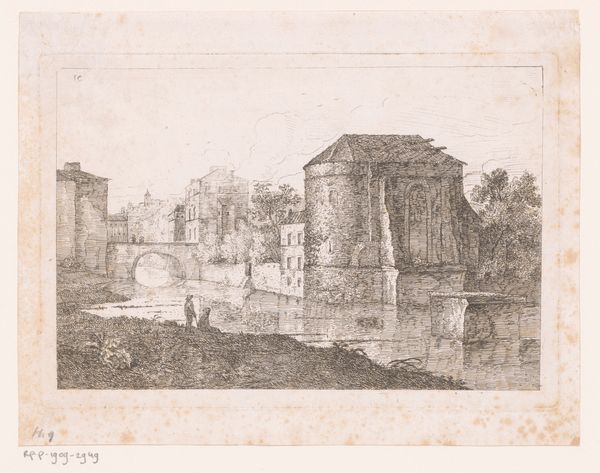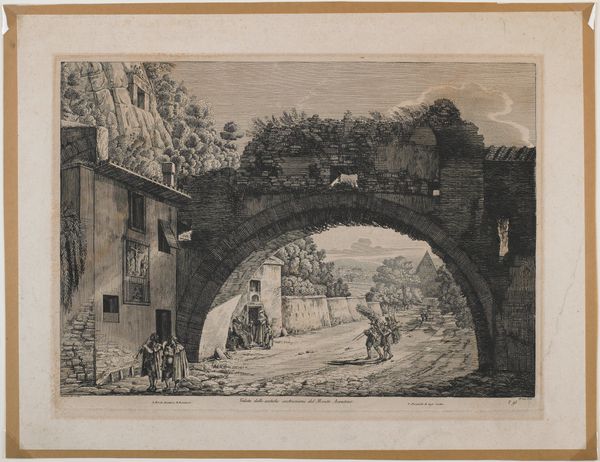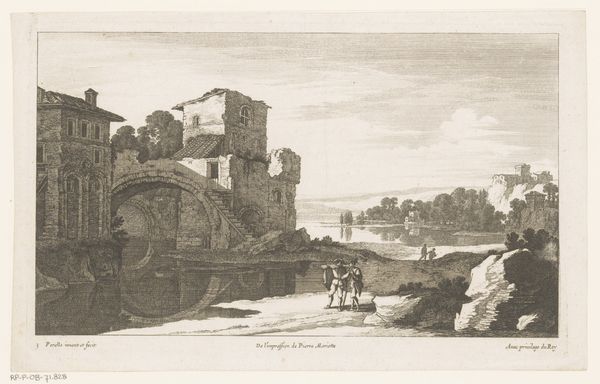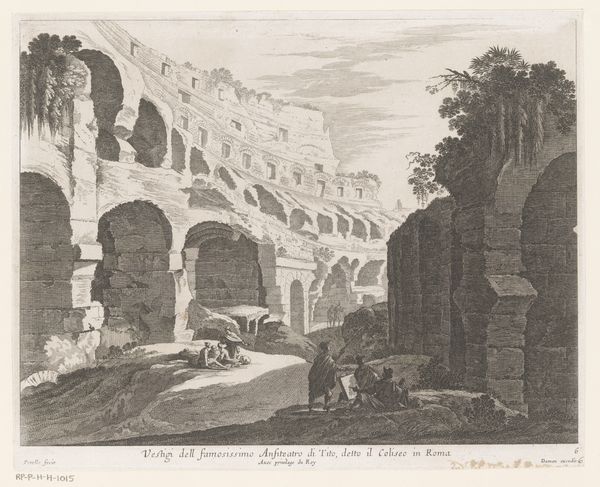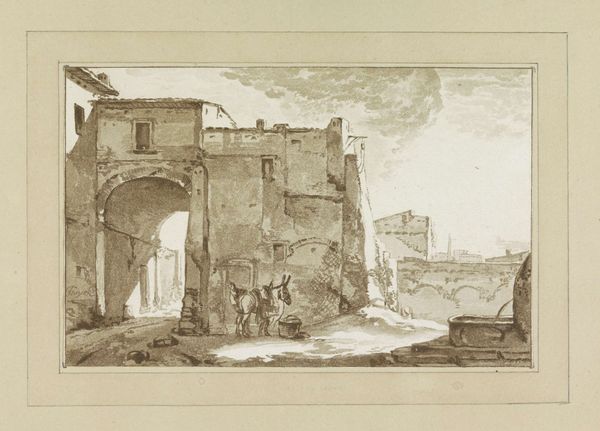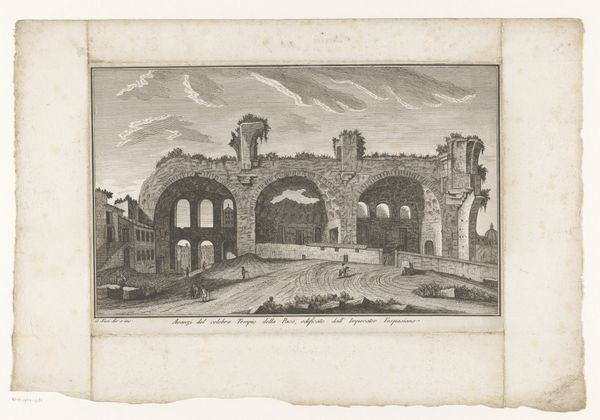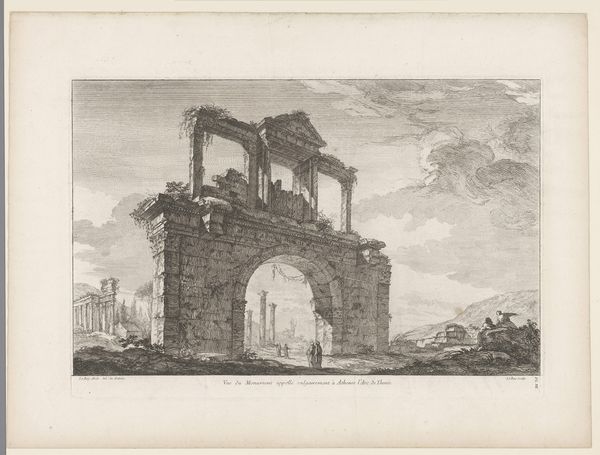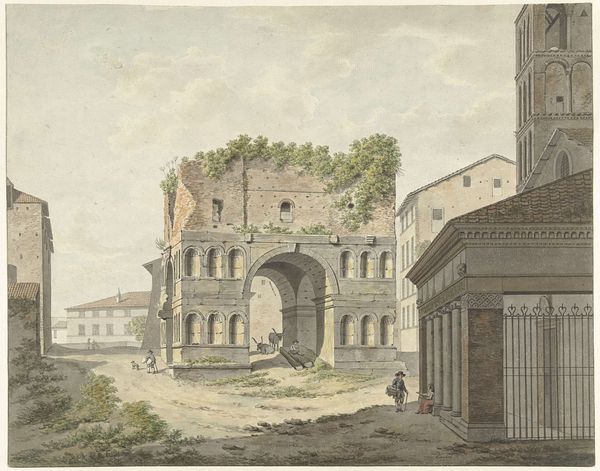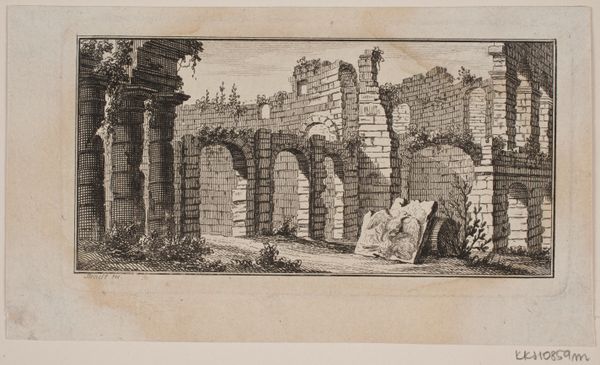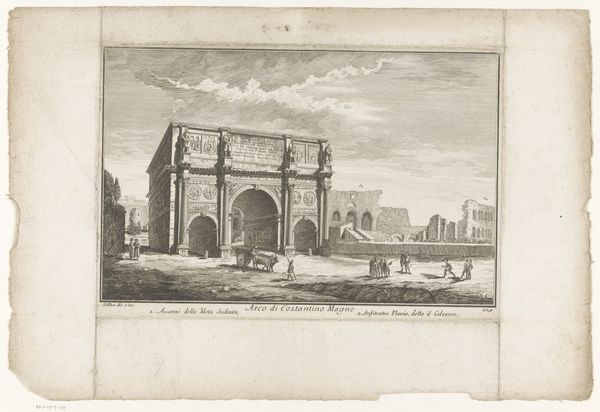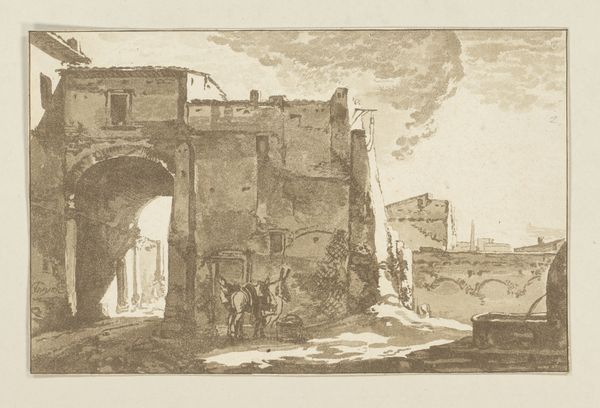
print, engraving, architecture
#
neoclacissism
# print
#
landscape
#
classical-realism
#
geometric
#
line
#
cityscape
#
history-painting
#
engraving
#
architecture
Dimensions: height 369 mm, width 474 mm
Copyright: Rijks Museum: Open Domain
Curator: The somber dignity practically radiates from this engraving. I feel almost dwarfed by the immensity it evokes. Editor: Quite. What you're observing is titled "Gezicht op de boog van Titus," created by François Morel between 1796 and 1798. It’s a study in Neoclassical architectural rendering. Curator: Yes, I notice the severe lines and exacting detail. The textures alone, rendered in etching, denote a clear mastery of light and shadow within the composition. The lines create depth. Editor: The artist employs these meticulous linear details in the service of historical documentation, imbuing the grand architecture with a renewed sense of importance during an age where concepts of empire were challenged. The Arc represents not only the conquest of Jerusalem but also, implicitly, Roman power. Curator: Power certainly seems to be the idea, yet the printmaker has subtly highlighted wear and age in the architecture, creating a rather engaging contrast between symbolic significance and material reality. The subjects feel minute. Editor: Indeed. The small human figures underscore that very notion – history witnessed. These weren't generic staffage, but the world these subjects inhabited. Also, take note of how print media played a pivotal role at the time, popularizing grand narratives of conquest through widespread, reproducible images like this. Curator: That speaks to its lasting effect. How architectural precision translates into a tangible monument on display within history, preserved through engravings. Editor: So in examining "Gezicht op de boog van Titus", we encounter an interweaving of both meticulous technique and profound historical representation, capturing an ideal vision of the ancient world and its impact upon the modern, then and now. Curator: Which continues to shape, question, and expand our interpretation of "empire," as always, it still provokes contemplation. Thank you!
Comments
No comments
Be the first to comment and join the conversation on the ultimate creative platform.
